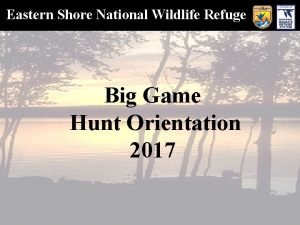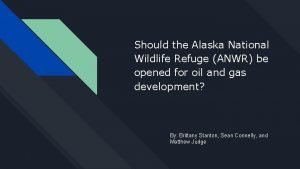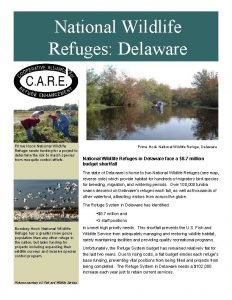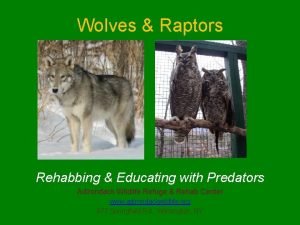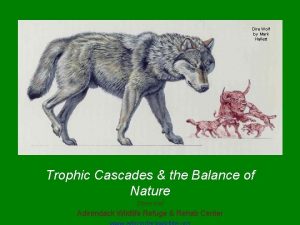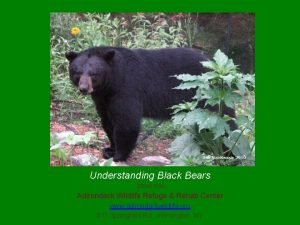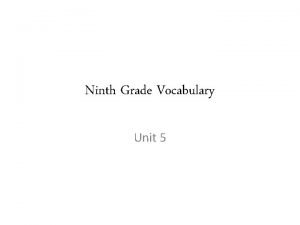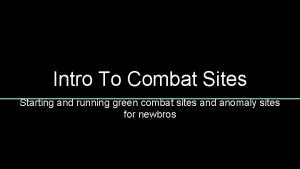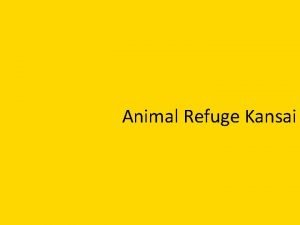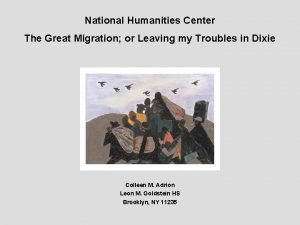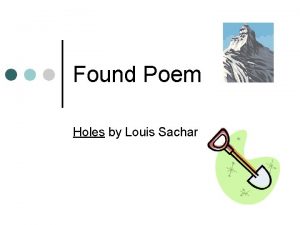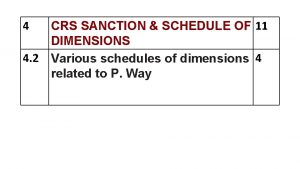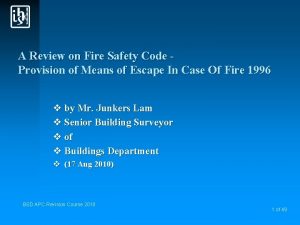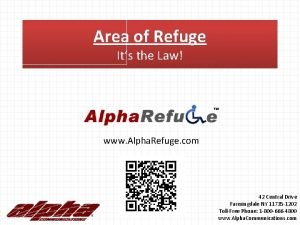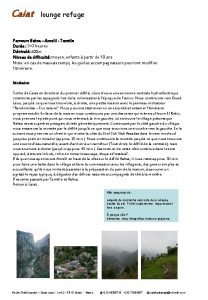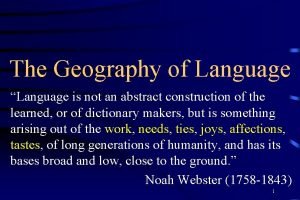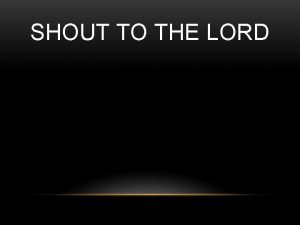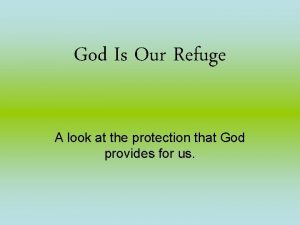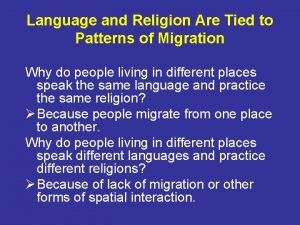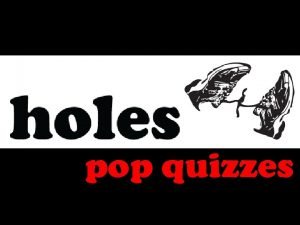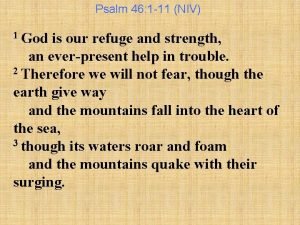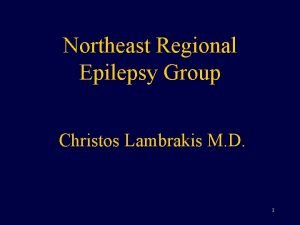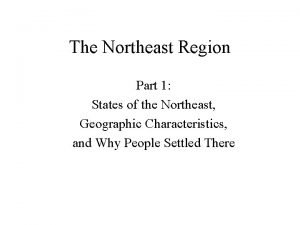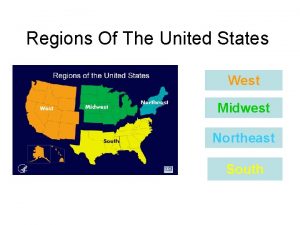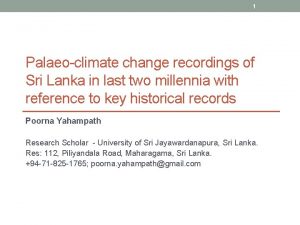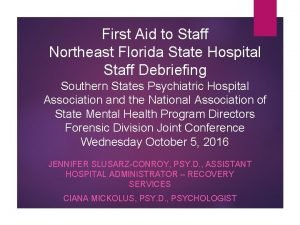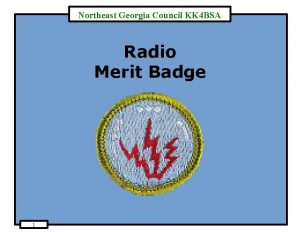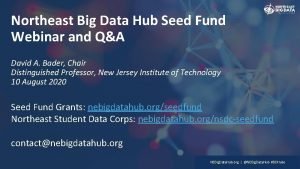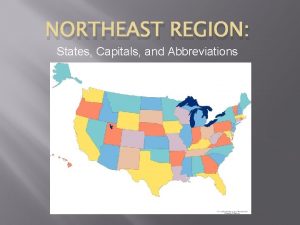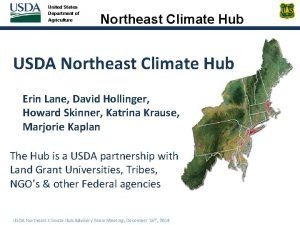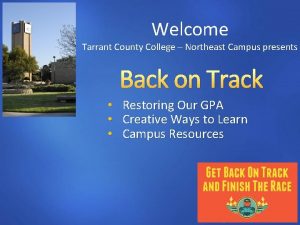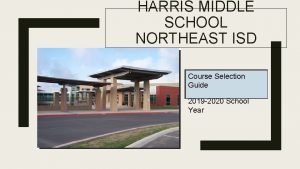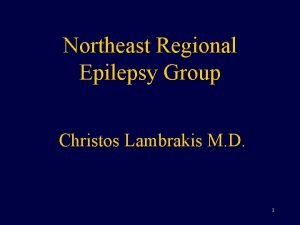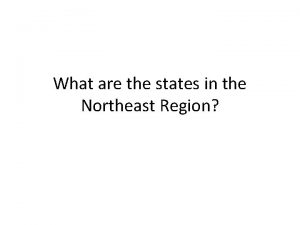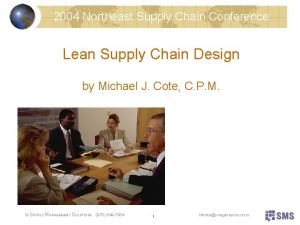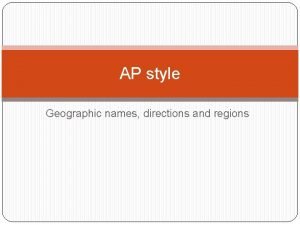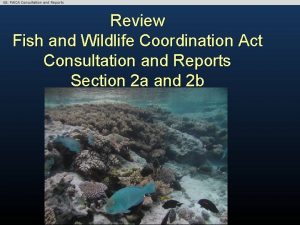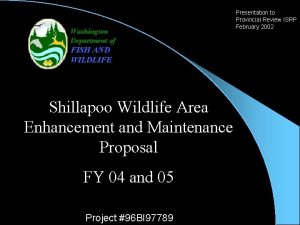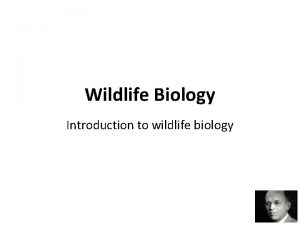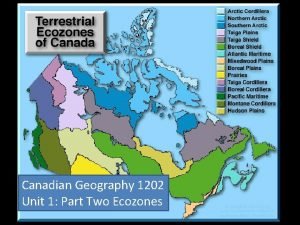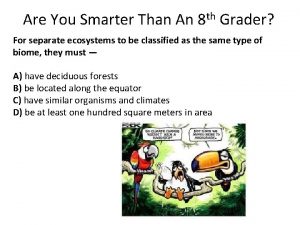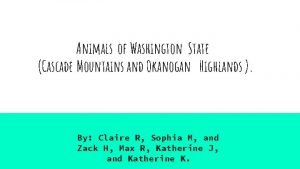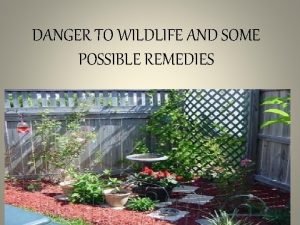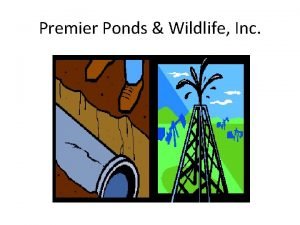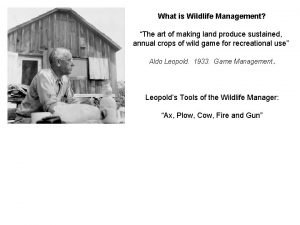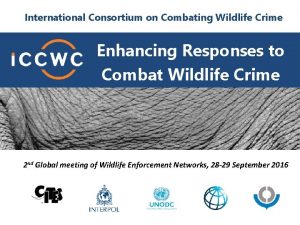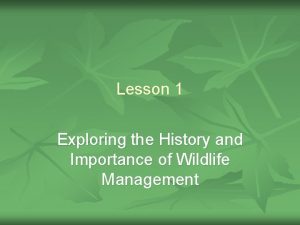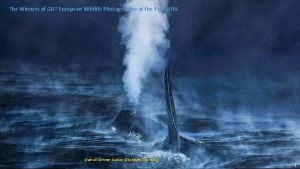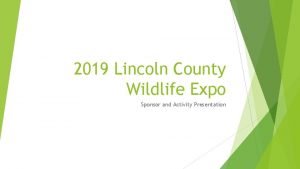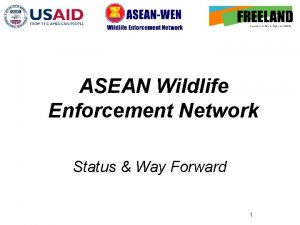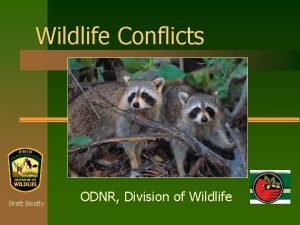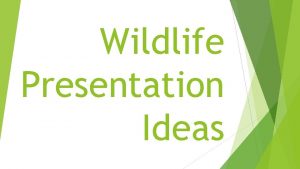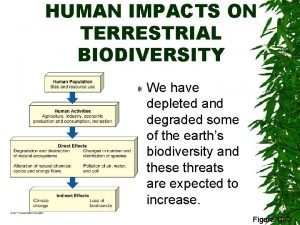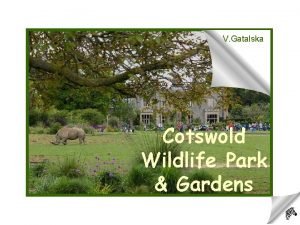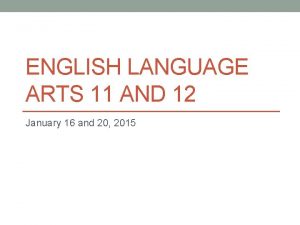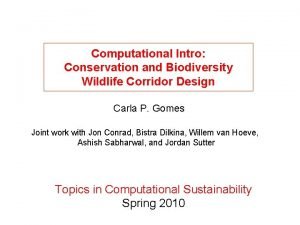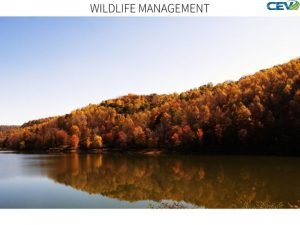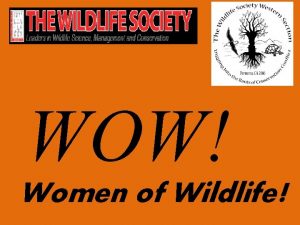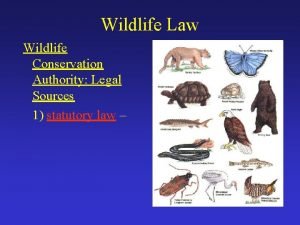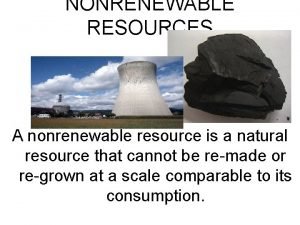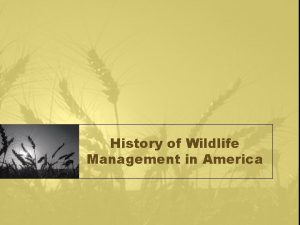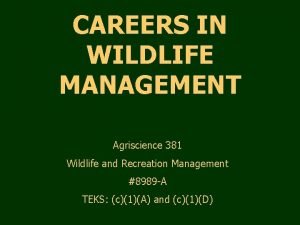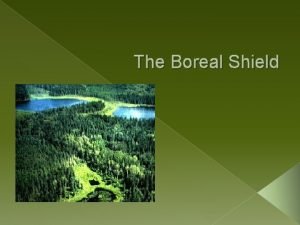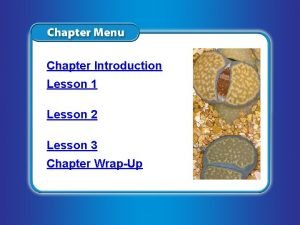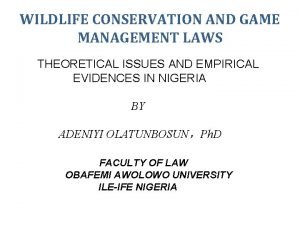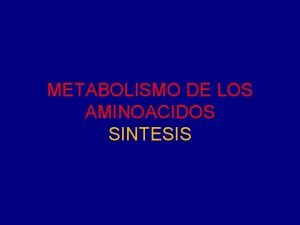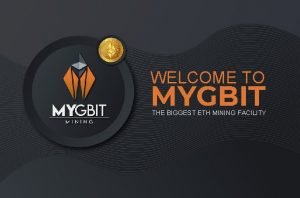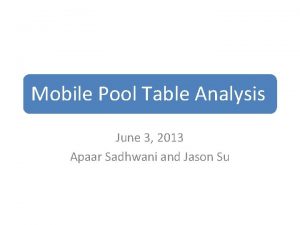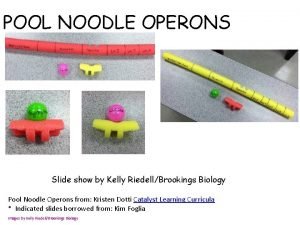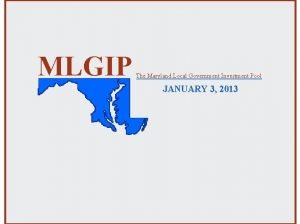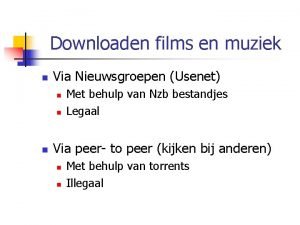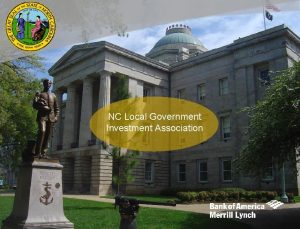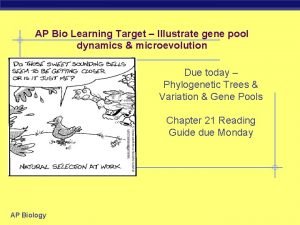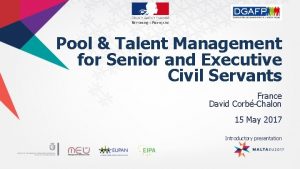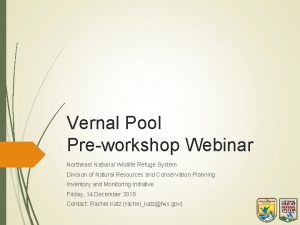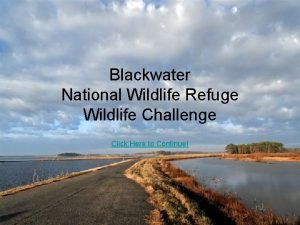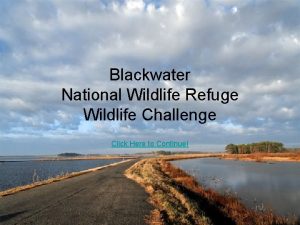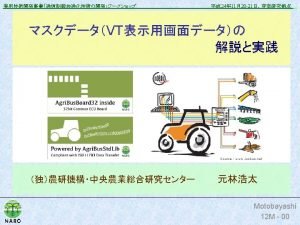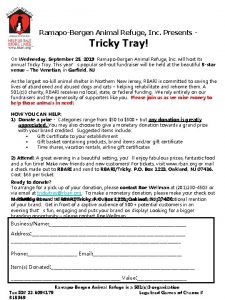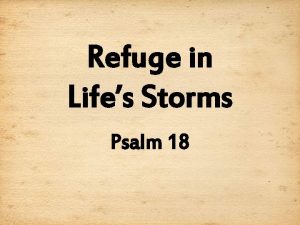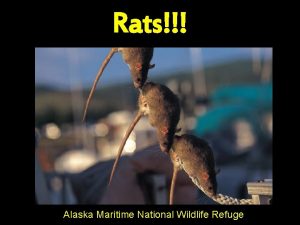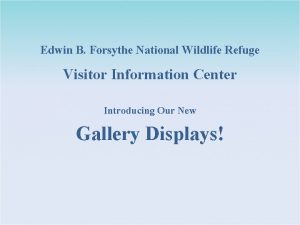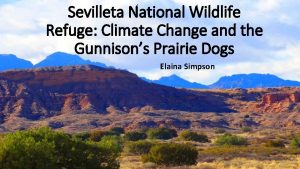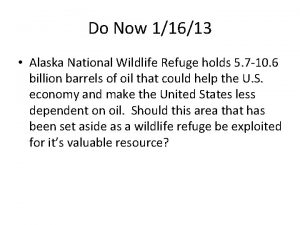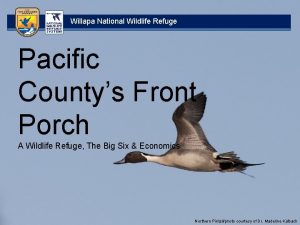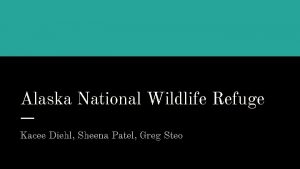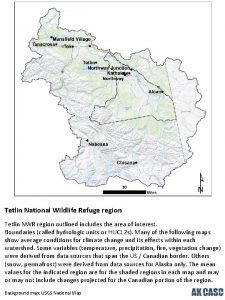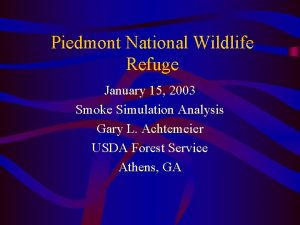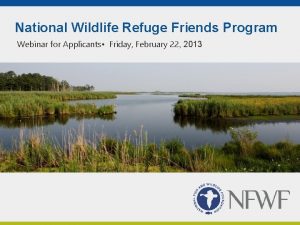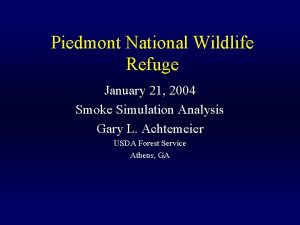Vernal Pool Workshop MiniLectures Northeast National Wildlife Refuge

































































































- Slides: 97

Vernal Pool Workshop Mini-Lectures Northeast National Wildlife Refuge System Division of Natural Resources and Conservation Planning Inventory and Monitoring Initiative February 5 -7, 2019, Regional Office, Hadley, MA

Welcome & Goals

Introductions and Housekeeping • Name, Affiliation • What are your hopes and dreams? • Safety/Exits • Group dinner tonight? • Google drive = “Vernal Pool - SDM Workshop 2019” • Group presentations Thursday - open? • Meeting ground rules

Why are we here? • Conservation Crisis • • USGS NEARMI long-term monitoring (10+years) Declines of vernal pool amphibians across NE NWRs are not “protected” Protection policies may not be sufficient Few actions being taken on the ground Rare vernal pool communities Unknown impacts on at-risk species (turtles) • Strategic Habitat Conservation Planning • • • Resources of Concern (ROCc) Habitat Management Plans (HMPs) Emerging threats (climate, disease) New biologists/staff Inventory and Monitoring (IMPs) • long-term monitoring vs. • targeted monitoring to inform mgt

Workshop Goals • Increase understanding of vernal pool ecology and management concerns on NWRs • Understand how to use decision processes (SDM/Road. Map) to build foundational elements for HMPs and IMPs • HMP: ROCs, Objectives, Strategies • IMP: Inventory, Monitoring, Research • Increase communication and collaboration among partners to solve vernal pool management problems

What does success look like? • Important vernal pool characteristics (metrics) • Threats facing vernal pool communities • Potential actions and their effects • Effects of current (non-vernal pool focused) mgt • The role of each refuge in the larger landscape • A strategic plan for vernal pool conservation • Management objectives for each refuge • A framework for decision-making • A framework for monitoring

Overview of structured decision-making Comprehensive Conservation Plan (CCP) Habitat Management Plan (HMP): ROCs & SMART Objectives HMP Strategies Inventory and Monitoring Plan (IMP)

Keeney 2004

Why is your problem “hard”? = select the right decision tool Problem Type Example Multiple Objective trade-offs are hard, can’t have it all Portfolio too many options, intractable combinations Information Needs too many unknowns to begin thinking about the problem, lots of “i don’t knows” Uncertainty too many “what ifs”, “it depends”, and “maybes” Prediction lots of variation and possible outcomes, a quantitative model is needed Dynamic iterative; timing and order matters

Workshop Agenda Day 1 Day 2 Day 3 0800 -0900 Next Steps 0900 -1030 NWRS Meeting 1030 -1230 PPTs/Lessons Learned

I&M Foundation “Road Map” for Designing Biological Monitoring Reynolds, Knutson, Newman, Silverman, & Thompson. 2016. Phase 1: Frame the Problem Objectives (CCP/HMP) Conceptual Model Actions & Strategies (HMP) Phase 2: Design Monitoring Decide on Approach (IMP) Attributes & covariates Write Protocol: Sampling Design Data Management Data Analysis & Reporting Phase 3: Implementation Collect Data Analyze Data Update Predictions

Workshop Format For each Pr. OACT step: • Learn concept (15 -30 min Lecture) • Apply to each refuge (1 -hr Breakout Teams) • Share insights (15 -30 min Group Discussion) • Repeat Breakout Teams (1 for each refuge): 1. Refuge Experts (1 -2 per team) 2. Ecological Experts (2 -3 per team) 3. SDM/Facilitators (1 per team)

Breakout Teams Canaan Valley NWR Refuge: Dawn & Kristin Expert: Jeff, Adrianne & Courtney SDM Facilitator: Erin Eastern Mass NWR Complex Refuge: Stephanie Expert: Laura E, Jill & Brittney SDM Facilitator: Becky USGS Trends: SS & WF declines HMP Status: 2017 IMP Status: None USGS Trends (ASB): SS & WF declines HMP Status: None IMP Status: None Umbagog NWR Refuge: Sean Expert: Evan & Nate SDM Facilitator: Troy (Evan) Patuxent Research NWR Refuge: Sandy Expert: NA SDM Facilitator: NA USGS Trends: WF Stable HMP Status: 2010 IMP Status: None USGS Trends: SS & WF declines HMP Status: None IMP Status: 2018 *Folks may need to move among teams to provide expertise


Defining the Problem

What is a Problem Statement? • Agreement on the problem or question is an essential, but often overlooked step. • Well-defined problems include information on scope, decision-makers, constraints, and stakeholders. • Monitoring must address information needs, be relevant for decision makers, and take into account changing budgets and staff. • If I had only one hour to solve a problem, I would spend 40 -min defining what the problem is. ” unknown

Example “Our roads are being flooded and something must be done! We never used to have beaver here, now they’re everywhere! Why can’t the refuge create a bounty on beaver pelts, of $25 or $50 dollars? ” What’s the Problem? • • Too many beavers? Not enough interest in trapping? Refuge management is impeding water? Water on township roads

Pulse Check (5 -min) In pairs or small groups, discuss the following: • Have you encountered a monitoring project where the problem or management objectives were unstated or unclear? • What were the consequences of poorly defining the problem or objectives?

Problem Statement Anatomy • Trigger – What triggered the problem? Why does a decision need to be made? • Action – What is the decision? What action(s) are being considered? (remember: no action is a decision) • Frequency & Timing – When and how often will the decision be made? Are other decisions linked to this one? • Scope and Scale – How large, broad, complicated is the problem/decision? Where is the area of concern? • Constraints – Legal, financial, political. Are these perceived or real constraints? (be creative) • Uncertainty – What degree of uncertainty is present? Does it matter to the decision? Which uncertainties can be ignored?

Problem Statement Template “A wants to do X to achieve Y over time Z in place W considering B and uncertainty in C. ” • A = Decision maker in charge of the decision • X = Action statement that indicates the scope of resources to be allocated • Y = Ultimate goal(s) to be achieved by doing “X” • Z = Temporal extent of the decision (planning horizon) • W = Spatial extent of the decision (refuge, mgt unit) • B = Potential constraints (legal, financial, and political) • C = Critically important uncertainties

Refuge Breakout Goals: Components: ● ● ● ● ● Trigger (T) Decision-Maker (A) Management Goal (Y) Action (X) Frequency & Timing (X) Geographic Scope (W) Temporal Scope (Z) Constraints (B) Key Uncertainty (C) Statement: “Due to T, A wants to do X to achieve Y over time Z in place W considering B and uncertainty in C. ” Why is the problem hard?

Setting Objectives

Where do you want to go?

Why are objectives important? • Objectives are crucial because they drive everything in a habitat management and monitoring program • Objective hierarchies can help further clarify the problem • Well stated objectives can be translated into measurable attributes and inform protocol development

Objective Hierarchy (all go into HMP) Fundamental objectives What you ultimately value, regardless of whether or not you can measure it. Why do you want that? Just because…. How do I achieve this? Means objectives Why is this important? Describes ‘how’ you can achieve the fundamental objective. Can be measured (e. g. population, habitat, abiotic) Attributes One or more characteristic of the system you plan to measure to meet your objective. e. g. species abundance, body How do I condition, native species diversity index, etc. know?


Convert concerns to objectives Concern (what you hear) Objectives (what you want) Ballast water brings in invasive species Minimize establinew invasive species Maximize native species richness We could never afford that Minimize cost Maximize outcomes per $ The public will never support this Maximize public support Maximize habitat quality

Other types of objectives e. g. population persistence e. g. abundance & distribution e. g. refuge support e. g. public awareness

Each objective is described by 1 or more attributes. Attribute: • Content (what you’ll measure) • Preferred direction of the measured content • The aspiration • • • maximize (or minimize) an absolute threshold level a particular level of change (rate of change) Example: Means obj - establish a reproducing plant pop • 3 -year mean flowering stem density (stems/m 2) • Increase (more is better) • Maximize (or Threshold > 100 stems/m 2)

Objective Hierarchy

Example Tear et al. 2005

Example Smith et al. 2015

What makes a good attribute? • Direct – Clearly related to objective of interest • Understandable - Readily understood and easily communicated (by those estimating/ predicting them and by the decision makers using them to make an informed choice) • Operational - Suitable information available; can be predicted from data or experts • Comprehensive - Covers full range of possible consequences (responds to actions)

NWRS’s attributes are. . .

Types of attributes • Natural attributes (most preferred) • Objective can be directly measured • Proxy attributes • Natural attribute that is highly correlated with the objective, but does not directly measure it • Constructed attributes (least preferred) • • • Sliding or relative scale Does not need to be linear Requires interpretation and clear definitions

Practice! What type of attributes are these? Minimize employee sick days → # of sick days Maximize popcorn sales → $ of sales Maintain reproductive success → # of fledglings What type of attributes are these? Minimize Nate’s boredom → # of yawns Maintain genetic diversity → % of natural range preserved Maintain reproductive success → # of acres of nesting habitat

Example: Hines emerald dragonfly

Evaluating Attributes Objective: Salamander Persistence Criteria (e. g. ensure SMARTness) Type of attribute (natural, proxy, constructed) Measurement (abundance, reproduction, occupancy, percent, height, depth, composition) Attribute directly represents objective (1 = yes, 2, 3) Attribute represents a field “standard” (1, 2, 3) Attribute response to management actions (1, 2, 3) Response has no lag or well-understood lag (1, 2, 3) Attribute is insensitive to other factors (or relationship is well understood) (1, 2, 3) High quality measurement (easy to implement) (1, 2, 3) Measurement is cost effective (cheap) (1, 2, 3) Important covariates/drivers are easy to measure (1, 2, 3) Option A Option B Option C proxy constructed # ponds with egg mass counts # ponds with adult frog calls average pool habitat quality index

Fundamental Objective Means Objective Attributes Translating into HMP Objectives Barrier Beach and Dune Habitat on Chincoteague NWR DRAFT Allow natural processes and functioning of at least [## acres (or proportion of available considering acreage changes or beach miles? )] sandy beach and dune habitat on Assateague, Assawoman, Metompkin, and Cedar Islands to sustain habitat quality for federally listed endangered and threatened species (i. e. , seabeach amaranth, piping plover, least tern, red knot, and loggerhead sea turtle) and other species of conservation concern. Sandy beach and dune habitat will have the following attributes: • • Areas of wide (generally no less than/up to # feet? ), open sand, above moon and mean high tide elevations with the continual deposition and erosion of sand due to natural geological processes during the months of April through July. A wrackline consisting of a variety of vegetation (e. g. , seaweeds, eel grass) at the mean high tide line during March through September. Permanent dunes heavily vegetated (percent range? ) with beach grass and forbs with scattered small clumps of beach grass at the tow of the dunes. At least one seabeach amaranth population of at least five plants per linear mile at the north end of Wild Beach for 10 consecutive years will be maintained, with zero losses due to human-caused disturbance or herbivory. At least 131 pairs of nesting piping plovers, with a productivity of more than 1. 2 chicks per pair as averaged over a 10 -year period and with zero mortality during active breeding season due to humancaused disturbance or predator-related causes. All loggerhead sea turtle nests will be protected in situ, with zero mortality of nesting or hatchling sea turtles due to human-caused disturbance or predator-related causes. Areas for migrating and wintering shorebirds (e. g. , red knot, least terns, sanderlings) that are free of humancaused disturbance.

Refuge Breakout Goals Create an objective hierarchy: • Fundamental • Means Identify potential attributes for each objective: • content (measurement - be specific!) • direction (increase, decrease) • aspiration (max, min, threshold) Translate into HMP objective • as needed, but after workshop

Conceptual Model

Conceptual Models • What’s a conceptual model? • What’s an influence diagram and how do I construct one? • Why should I bother with pictures and diagrams?

What is a conceptual model? • A visual depiction of a shared understanding of key components of a system and driving factors • Helps make predictions (thus decisions) about how (stressors, management actions, policy) may impact objectives • Provides a foundation for building qualitative and quantitative models • Illustrates where monitoring is expected to improve understanding

So many kinds! Go with your gut. . .


Using Miradi


Salamander and Bsal

“All models are wrong, some are useful. ” - George Box Influence diagrams: A graphical representation of a problem that depicts our current understanding of the drivers and decisions (actions) that influence the outcomes (objectives) of interest.

Example Starting condition Past land use and management Action: burn, graze, rest, combo Disturbance (defoliation) frequency and intensity Field size & landscape context Adjacent land uses Weather & Climate Objective: High quality prairie Pollinators Hydrology Soils

Constructing an influence diagram • Pick one objective to focus on • Brainstorm the most important limiting factors • • demographic: recruitment, survival, movement habitat: quality vs. quantity vs. distribution • Identify major threats to each limiting factor • • environmental: climate, abiotic biological: disease, predation chemical: soil, water quality human: roads/trails, poaching, forest mgt • What external drivers are outside our control? • • • climatic land conversion / use emerging diseases

Use different symbols (4 types) Starting condition Past land use and management Action: burn, graze, rest, combo Disturbance (defoliation) frequency and intensity Field size & landscape context Adjacent land uses Weather & Climate Objective: High quality prairie Pollinators Hydrology Soils

Refuge Breakout Goals Create a conceptual model • • Objectives Limiting Factors and Threats External Drivers Symbols: • • • objective = hexagon can influence = rounded box cannot influence = circle Identify uncertain linkages • Bold lines = important linkage, big effect • Dashed lines = uncertain linkage or effect

https: //www. fws. gov/policy/601 fw 3. html

Alternative Actions

Creating management actions • The best thing that can be done is only as good as the best option we come up with! • Creating alternative actions helps us to better understand our objectives • When all options are explored, people are more willing to make difficult choices • Don’t dismiss options too early (due to perceived feasibility, cost, or effectiveness)

Use your conceptual model! Action: burn, graze, rest, combo Starting condition Past land use and management Action: outreach to partners (encourage plantings) Action: sow native perennials Disturbance (defoliation) frequency and intensity Field size & landscape context Adjacent land uses Weather & Climate Objective: High quality prairie Pollinators Hydrology dashed lines = uncertain linkages Soils

Use your conceptual model! bold lines = big influence Whooping crane model for Necedah NWR

Satisfied? Improving your options. . . • Focus on fundamental objectives • Address conflicting objectives • Challenge apparent constraints • Visualize – diagrams • Create portfolios or strategy tables • Revisit objectives • Include “outsider“ views

Creating Portfolios of Actions Decision: Which species to target? Options: A, B, A + B, etc. Portfolio: combinations of distinct species


Strategy Table Example • Identify “themes” of actions from your list • Group actions under each theme • Create a “shopping list” to pull from Habitat management actions Predator control actions Enhance population actions Status quo None Ban logging in a critical habitat Reduce predators by 10% Captive Breeding Enhance corridor habitat Reduce predators by 50% Translocate Individuals *Note these could all be listed as strategies in Chapter 4 of the HMP, but you may still need to decide which ones to implement given available resources.

Create a Strategy Table • Pick 1 or more actions to represent a management strategy Habitat management actions Predator control actions Enhance population actions Status quo None Ban logging in a critical habitat Reduce predators by 10% Captive Breeding Enhance corridor habitat Reduce predators by 50% Translocate Individuals • “Maintain Population Strategy”

Create a Strategy Table • Pick 1 or more actions to represent a management strategy Habitat management actions Predator control actions Enhance population actions Status quo None Ban logging in a critical habitat Reduce predators by 10% Captive Breeding Enhance corridor habitat Reduce predators by 50% Translocate Individuals • “Enhance Movement Strategy”

Create a Strategy Table • Pick 1 or more actions to represent a management strategy Habitat management actions Predator control actions Enhance population actions Status quo None Ban logging in a critical habitat Reduce predators by 10% Captive Breeding Enhance corridor habitat Reduce predators by 50% Translocate Individuals • “Increase Population Strategy”

Build distinct options to evaluate Habitat protection action Predator control action Enhance population action Maintain Population Strategy Status quo Harvest None Enhance Movement Strategy Develop linkage corridors Reduce predators by 10% Translocate Increase Population Strategy Ban logging in critical habitat Reduce predators by 50% Captive breeding Strategy

Avoiding “analysis paralysis” • What’s the worst thing that would happen if • • you did nothing (or status quo) for 15 -years? you took action tomorrow? • If you could know 5 factors perfectly (no uncertainty in their influence), which ones would help you decide among actions? • What is the true cost of waiting (how much better would our decision/objective be if we waited to learn about all the factors)?

Refuge Breakout Goals Identify potential actions • Place actions onto your conceptual model • Identify the pathway from each action to objective (this is called a “result chain”) • Develop themes for groups of actions • Create 4 -6 Alternatives/Strategies • • Portfolios Strategy Table

Predicting Consequences

Overview of structured decision-making Comprehensive Conservation Plan (CCP) Habitat Management Plan (HMP): ROCs & SMART Objectives HMP Strategies Inventory and Monitoring Plan (IMP)

Predicting Consequences • Models are used to predict what will happen • Do not need to be complex (just complex enough to meet needs for the decision and no more) • Should be explicit and transparent • Uncertainties are captured • Decision-specific • • • Inputs based on alternative actions Outputs based on objectives Uncertainty based on conceptual model





Visualize the best outcomes (green) Visualize the worst outcomes (red)

Consequence Tables • A lot of information in concise & orderly format • Easy to compare alternatives, objective by objective • Simple communication tool to managers • Initial framework for assessing tradeoffs • Parameterize using expert opinion • Use simple simulations to estimate “mean” expected outcomes (and range) • Use ‘hard data’ to estimate effects in the past (use as baseline for future effects)

Trade-off Analysis

Trade-off Analysis

How do we account for relative importance? (swing weighting) Objective Direction Attribute Worst Best Rank Score Weight Outcom e e Recreation Max % Open 5 50 2 Wildlife Max 1 -5 scale 3 4 -5 1 Cost Min $/10 yrs 50 K 0 K Filtration Min Avg silt 4. 0 0. 5 4 3 • • Imagine the worst outcomes are all true! Which objective would you “swing” from worst to best outcome first? rank = 1 Which would you swing next? rank = 2 Continue until all are ranked

How do we account for relative importance? (swing weighting) Objective Direction Attribute Worst Best Rank Score Weight Outcom e e Recreation Max % Open 5 50 2 50 Wildlife Max 1 -5 scale 3 4 -5 1 100 Cost Min $/10 yrs 50 K 0 K 4 5 3 30 Filtration Min • • Avg silt 4. 0 0. 5 rank 1 = 100 score How much less do you care about swinging “ 2” compared to “ 1”? Half as much? Use full scale from 1 to 100 if possible

How do we account for relative importance? (swing weighting) Objective Direction Attribute Worst Best Rank Score Weight Outcom e e Recreation Max % Open 5 50 2 50 0. 27 Wildlife Max 1 -5 scale 3 4 -5 1 100 0. 54 Cost Min $/10 yrs 50 K 0 K Filtration Min • • • Avg silt 4. 0 0. 5 0. 03 4 5 3 30 185 0. 16 1. 00 sum scores across all objectives (total = 185) calculate weights (score 50 / total 185 = 0. 27) for each multiple outcomes by how much you care about each (weights) = expected happiness/utility

Trade-off Analysis w = 0. 27 w = 0. 54 w = 0. 03 w = 0. 16

How do we make the predictions? • Build a qualitative or quantitative model: • Decision Trees • Occupancy Models • Population Models • Habitat Models • Bayesian Beleif Networks • Sources of information: • theoretical relationships • published literature values • meta-analysis • expert opinion

Predict conceptual model linkages What other types of relationships are missing?

Predict conceptual model linkages uncertainty increases

Bayesian Belief Networks e. g. Wood frog persistence Smalling et al. In Review

Refuge Breakout Goals Draw linkages • Pick 1 objective • Draw the relationship between each node until you reach the action node Develop a consequence table • • Use qualitative (-, 0, +) Use quantitative (numbers) Green = best outcomes Red = worst outcomes Find solution • Swing-weighting

Monitoring Needs

The role of monitoring • What is NOT monitoring? • Inventory, Research, Reconnaissance • What is monitoring? • Understand the system - Status & Trends Monitoring • Decide when to act - Threshold Monitoring • Assess outcome of an action - Effectiveness Monitoring • Assess multiple possible actions, and choose next action - Adaptive Management Monitoring • Choice of monitoring should be catered to address your problem!

Monitoring requires capacity, so choose wisely! • Scientific oversight (scientist) • Data collection (labor, training, travel, supplies) • Data management (data manager) • Data analysis and reporting (statistician) • Administration (manager) • Other – equipment depreciation (vehicles) • When should we do research vs. monitoring vs. inventory?

Why is your problem “hard”? = select the right decision tool Problem Type Example Multiple Objective trade-offs are hard, can’t have it all Portfolio too many options, intractable combinations Information Needs too many unknowns to begin thinking about the problem, lots of “i don’t knows” Uncertainty too many “what ifs”, “it depends”, and “maybes” Prediction lots of variation and possible outcomes, a quantitative model is needed Dynamic iterative; timing and order matters

Qualitative Needs Assessment (e. g. Bsal proactive management in the US)

Wrap Up / Next Steps

What steps need re-visiting? (rank them 1 to 5) Comprehensive Conservation Plan (CCP) Habitat Management Plan (HMP): ROCs & SMART Objectives HMP Strategies Inventory and Monitoring Plan (IMP)

What does success look like? • Important vernal pool characteristics (metrics) • Threats facing vernal pool communities • Potential actions and their effects • Effects of current (non-vernal pool focused) mgt • The role of each refuge in the larger landscape • A strategic plan for vernal pool conservation • Management objectives for each refuge • A framework for decision-making • A framework for monitoring

Next Steps and Timelines Rachel: DNRCP: Refuge Biologists: USGS:
 Eastern shore wildlife refuge hunting
Eastern shore wildlife refuge hunting Arctic national wildlife refuge oil drilling pros and cons
Arctic national wildlife refuge oil drilling pros and cons Prime hook national wildlife refuge map
Prime hook national wildlife refuge map Adirondack wildlife refuge
Adirondack wildlife refuge Necedah wildlife refuge map
Necedah wildlife refuge map Adk wildlife refuge
Adk wildlife refuge Adk wildlife refuge
Adk wildlife refuge Vernal irony
Vernal irony Situational irony in oedipus the king
Situational irony in oedipus the king Refuge sentence in english
Refuge sentence in english Serpentis corporation hydroponics site
Serpentis corporation hydroponics site Ark kansai
Ark kansai The city of refuge rudolph fisher
The city of refuge rudolph fisher Holes poem
Holes poem Trolley refuge dimension
Trolley refuge dimension Consistency is the last refuge of the unimaginative
Consistency is the last refuge of the unimaginative Refuge floor pnap
Refuge floor pnap Illuminated area of refuge sign
Illuminated area of refuge sign Caiat lounge refuge
Caiat lounge refuge Syntax definition ap human geography
Syntax definition ap human geography My jesus my savior nothing compares to you
My jesus my savior nothing compares to you The eternal god is our refuge
The eternal god is our refuge Linguistic refuge area
Linguistic refuge area Holes chapter 1-5 quiz
Holes chapter 1-5 quiz Jesus my saviour
Jesus my saviour Psalm 46 niv
Psalm 46 niv Northeast regional epilepsy
Northeast regional epilepsy Northeast epilepsy group
Northeast epilepsy group Resources of the northeast region
Resources of the northeast region West midwest south northeast
West midwest south northeast Beminitiya seya
Beminitiya seya Nefsh
Nefsh Northeast georgia council bsa
Northeast georgia council bsa Northeast big data innovation hub
Northeast big data innovation hub Northeast states abbreviations
Northeast states abbreviations From an iron post proceed 500 m northeast
From an iron post proceed 500 m northeast Northeast climate hub
Northeast climate hub Northeast vine supply
Northeast vine supply Northeast, southeast, northwest, southwest
Northeast, southeast, northwest, southwest Is athens northeast of sparta
Is athens northeast of sparta Tarrant county college - northeast campus
Tarrant county college - northeast campus Northeast isd
Northeast isd Northeast regional epilepsy
Northeast regional epilepsy Map of northeast
Map of northeast Rocky mountain states
Rocky mountain states Northeast lean conference
Northeast lean conference Ap style directions
Ap style directions Fish and wildlife coordination act
Fish and wildlife coordination act Shillapoo wildlife area
Shillapoo wildlife area Manipulative wildlife management
Manipulative wildlife management Montane cordillera wildlife
Montane cordillera wildlife Wildlife biologist
Wildlife biologist Spoil wildlife
Spoil wildlife Cascade mountains wildlife
Cascade mountains wildlife Depletion of animals
Depletion of animals Frac pond liner
Frac pond liner Wildlife management as an art
Wildlife management as an art International consortium on combating wildlife crime
International consortium on combating wildlife crime History of wildlife conservation
History of wildlife conservation Gdt european wildlife photographer of the year
Gdt european wildlife photographer of the year Lincoln county wildlife expo
Lincoln county wildlife expo Asean wildlife enforcement network
Asean wildlife enforcement network Odnr division of wildlife
Odnr division of wildlife Wildlife topics for presentation
Wildlife topics for presentation Impacts of wildlife trade on terrestrial biodiversity
Impacts of wildlife trade on terrestrial biodiversity Cotswold wildlife park
Cotswold wildlife park Diane boyd wildlife biologist act
Diane boyd wildlife biologist act Wildlife corridor design
Wildlife corridor design Objectives of wildlife management
Objectives of wildlife management Claudia funari
Claudia funari Wildlife conservation law
Wildlife conservation law Explain wildlife
Explain wildlife Wildlife protection act
Wildlife protection act History of wildlife management
History of wildlife management Careers in wildlife management
Careers in wildlife management Boreal shield vegetation
Boreal shield vegetation Wildlife reproduction
Wildlife reproduction Natural vegetation and wildlife in karnataka
Natural vegetation and wildlife in karnataka Introduction of wildlife conservation
Introduction of wildlife conservation National unification and the national state
National unification and the national state Arc welding objectives
Arc welding objectives Interwarp
Interwarp Pool de aminoácidos
Pool de aminoácidos Mygbit mining
Mygbit mining Apaar sadhwani
Apaar sadhwani Pool noodle operons
Pool noodle operons Gene pool
Gene pool Maryland local government investment pool
Maryland local government investment pool Brainpool fellowship
Brainpool fellowship Nieuwsgroepen films downloaden
Nieuwsgroepen films downloaden Pool knowledge
Pool knowledge Local government investment pool services north carolilna
Local government investment pool services north carolilna Gene pool ap bio
Gene pool ap bio The pool talent management
The pool talent management Sai kung swimming pool
Sai kung swimming pool Energie pool schweiz
Energie pool schweiz Salt water pool heat exchanger
Salt water pool heat exchanger Swimming pool eastwood
Swimming pool eastwood
